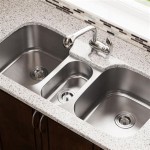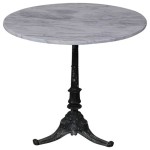How To Choose And Install Kitchen Cabinet Trim Molding
Kitchen cabinet trim molding can bring a finished look to your kitchen cabinets, enhancing their beauty and elegance. Selecting the right trim molding and installing it properly is essential to achieve the desired results. Here's a comprehensive guide to help you choose and install kitchen cabinet trim molding.
Choosing Kitchen Cabinet Trim Molding
When choosing kitchen cabinet trim molding, consider the following factors:
- Style: The trim molding should complement the style of your kitchen cabinets. Traditional kitchens may suit classic crown molding, while modern kitchens may opt for sleeker profiles.
- Material: Trim molding is typically made from wood, MDF, or PVC. Wood offers durability and versatility, while MDF is less expensive but may be more prone to moisture damage. PVC is moisture-resistant and can mimic the look of wood.
- Size: The size of the trim molding should be proportionate to the size of your cabinets and the overall kitchen space.
- Color: Choose a trim molding color that harmonizes with your cabinet finish and kitchen color scheme.
Installing Kitchen Cabinet Trim Molding
To install kitchen cabinet trim molding, follow these steps:
1. Measure and Cut the Molding
Measure the length of the cabinet where you want to install the trim molding and cut it using a miter saw.
2. Attach the Trim Molding
Apply a thin bead of wood glue to the back of the trim molding and press it firmly into place on the cabinet. Use brad nails or a nail gun to secure the molding, countersinking the nails slightly below the surface.
3. Cut and Attach Corner Joints
For corners, cut the trim molding at a 45-degree angle using a miter saw. Apply glue and attach the molding to both cabinets, ensuring a snug fit.
4. Fill Nail Holes and Sand
Fill any nail holes with wood putty or spackling compound. Once dry, sand the filled areas and the entire trim molding for a smooth finish.
5. Paint or Stain the Molding
If desired, paint or stain the trim molding to match your kitchen's color scheme. Allow it to dry completely.
Additional Tips
- Use a caulk gun to fill any gaps between the trim molding and the cabinet for a seamless finish.
- If your cabinets have decorative elements, consider using a more elaborate trim molding to accentuate them.
- For an integrated look, use the same trim molding on all of your kitchen cabinets, including the refrigerator and pantry.
Conclusion
Installing kitchen cabinet trim molding can transform the look of your kitchen, adding character and sophistication. By following the steps outlined above, you can select and install the perfect trim molding to complement your cabinets and enhance the overall aesthetic of your kitchen.

10 Types Of Kitchen Cabinet Molding For Your Home

Adding Moldings To Your Kitchen Cabinets Remodelando La Casa

How To Install Kitchen Cabinet Crown Molding Family Handyman

Adding Moldings To Your Kitchen Cabinets Remodelando La Casa

Kitchens How To Install Crown Molding Or Valance Board Around A Cabinet Home Improvement Stack Exchange

How To Add Crown Molding Kitchen Cabinets Abby Organizes

How To Install Crown Molding On Cabinets Young House Love

Guide To Kitchen Molding Types Cabinetselect Com

Adding Moldings To Your Kitchen Cabinets Remodelando La Casa

How To Add Crown Molding Kitchen Cabinets Abby Organizes
Related Posts








